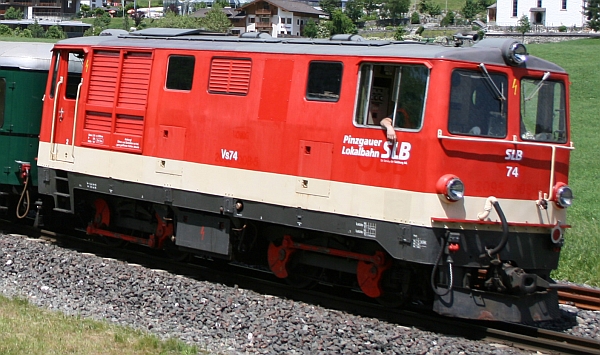
The Liliput 2095 diesel in H0e is still a much-wanted model even after being out of production for nearly 20 years. The loco is usually very reliable but has an Achilles heel in that the plastic counterweights go brittle with age and split at the point the connecting rod pin is pressed into the counterweight. This split causes the connecting rod pin to fall out and get lost whilst the plastic conrod can strike the roadbed and break as it tries to jack up the loco.
Invariably this makes the model unusable as spares are almost non-existent. There is a German seller on eBay selling what appear to be original parts in Liliput labelled packets but he is actually salvaging them from broken models and some are sold with split counterweights and are unusable. A pretty shoddy practice in my view.
I have two of these models and by a series of butter-finger moments I managed to drop both of them onto my workshop floor, breaking connecting rods and counterweights and causing the workshop to go blue with inappropriate language, mainly Olde English!
After putting the locos away I wondered if it would be possible to have some replacement counterweights and connecting rods made by using photo-etching a suitable metal. It was at this stage I made contact with Sven van der Hart of Tramfabriek.nl, a Dutch tram modelling enthusiast who makes his own etches for the excellent H0e Dutch trams he sells. Sven made me two sets of prototype counterweights and connecting rods in etched nickel-silver. He soldered an etched washer onto the back of the counterweights to thicken them and to space the counterweight away from the frames. Sewing pins are used to connect the connecting rods to the counterweights which are half-etched to allow the centre to be painted and the outsides to be silver for those locos that have that feature, not all 2095s do. Thin etched washers in two thicknesses are provided as well.
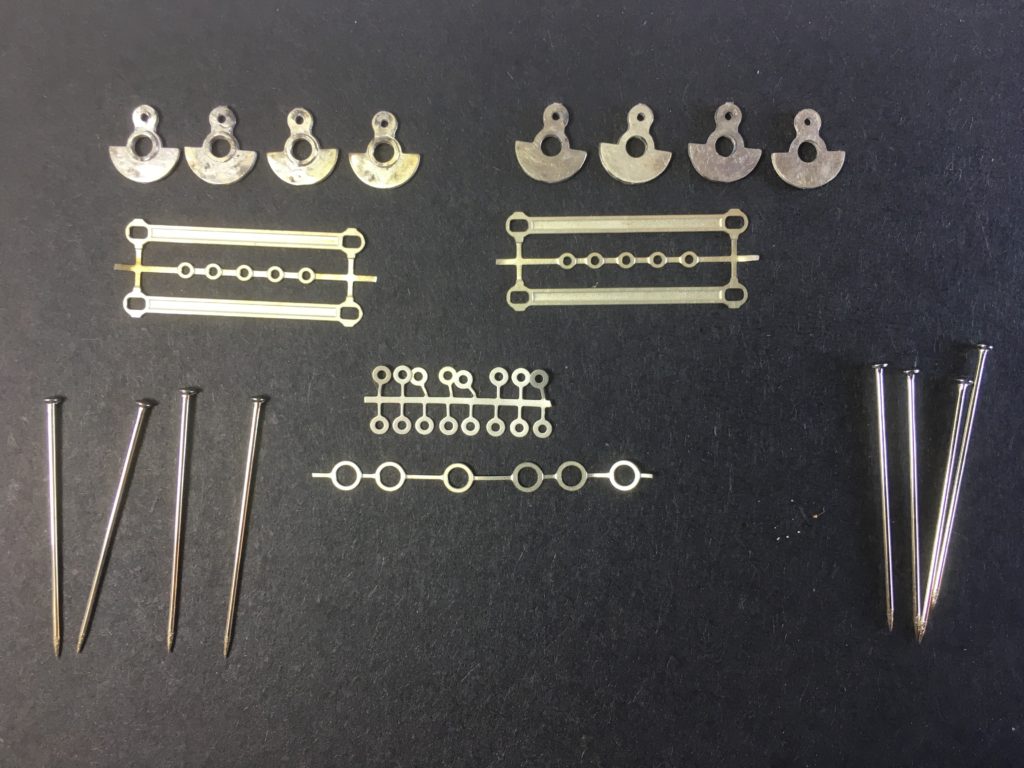
To prepare the parts for use I pinned them to some spare foamcore board so that the did not get lost when being painted and assembled.
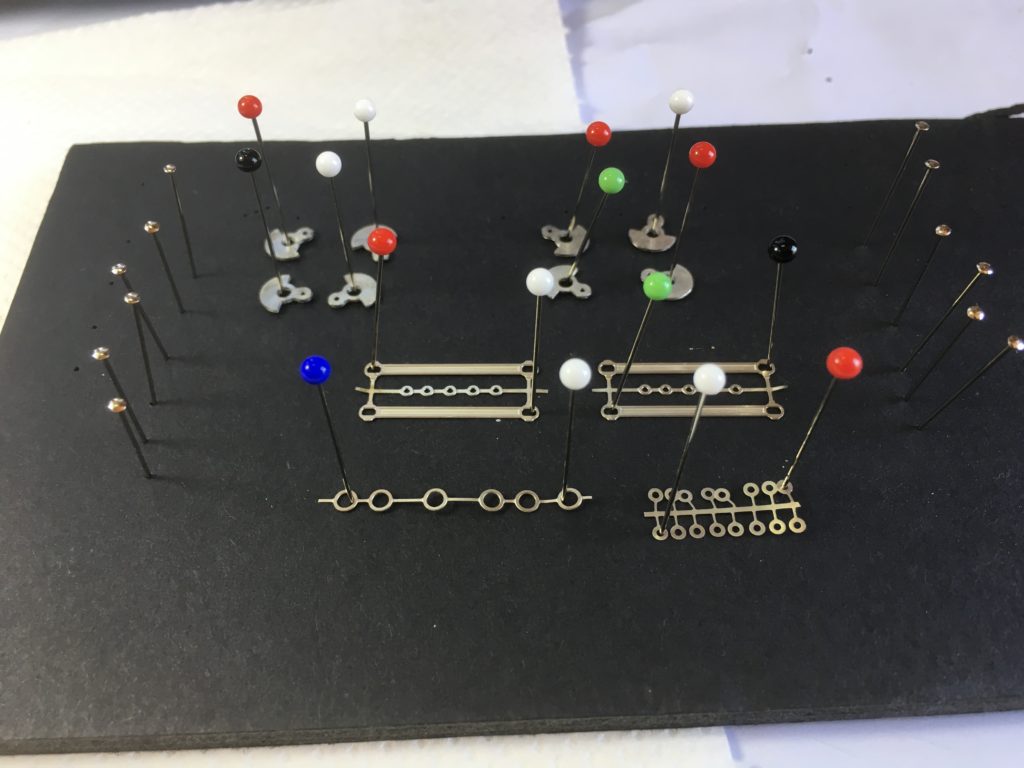
I needed to carefully remove the existing plastic counterweights so that I could use the undamaged plastic counterweights and connecting rods to repair my second loco. Using a small gear puller designed for use on R/C cars I was able to achive this aim with no damage to the plastic components. BE careful not to pull the brass ferule off ofnthe axle. If you do it can be fixed back in place using Loctite 638 compound.
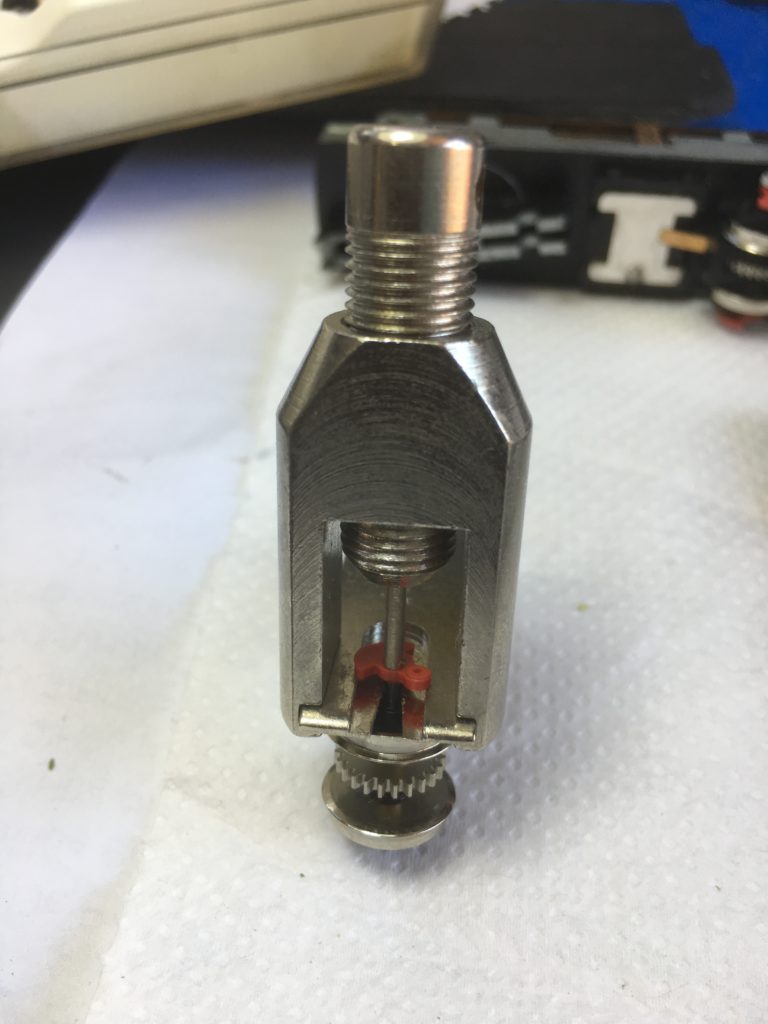
The etched components were first sprayed with a fine coat of Halfords Etch Primer. This was left overnight to thoroughly dry because the etch, and therefore maximum adhesion, occurs at the final drying stage. I then hand painted the items with two coats of Tamiya X7 red acrylic paint.
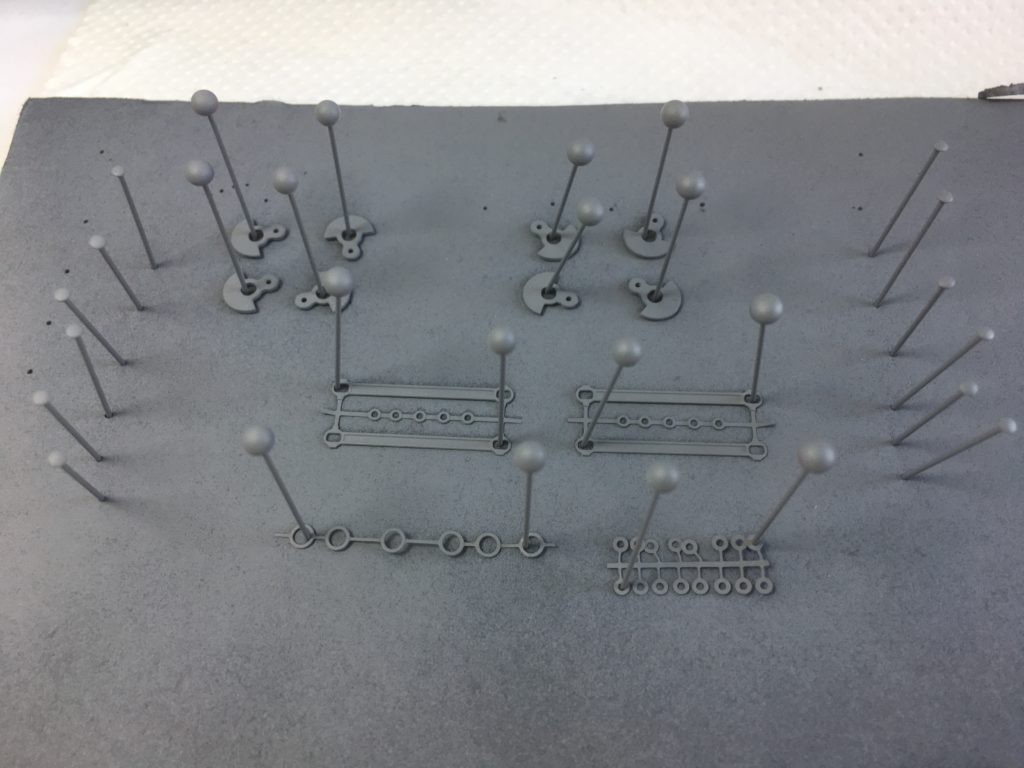
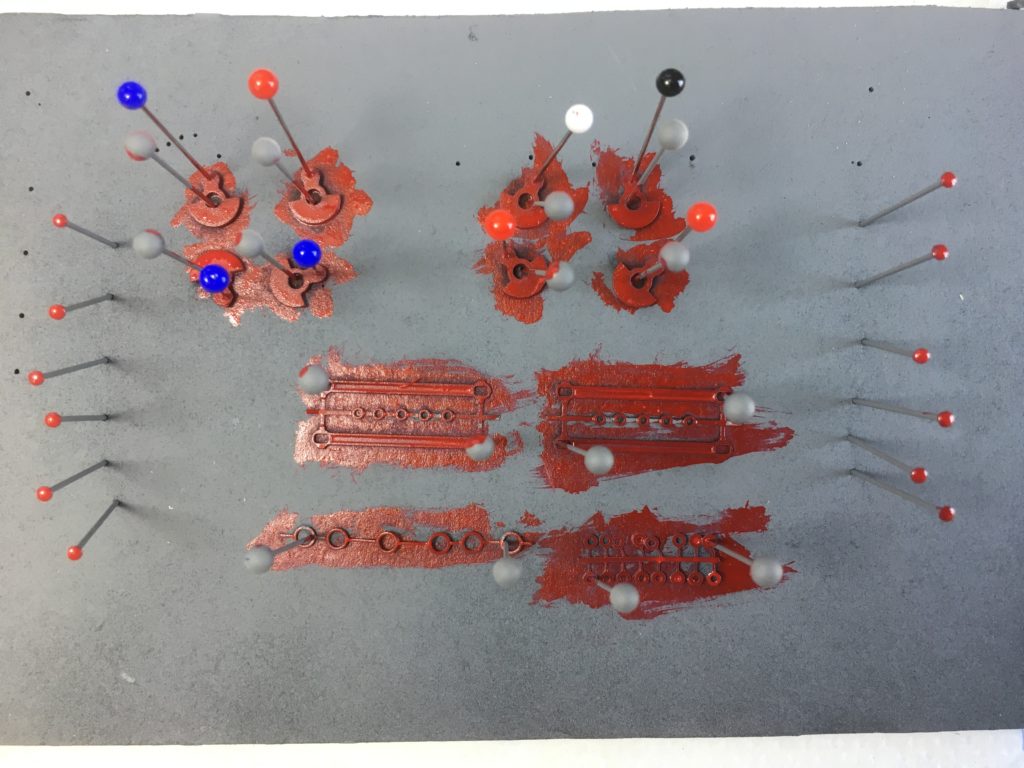
I decided to solder up the counterweights and connecting rods, using the sewing pins as connecting rod pins. To prevent the connecting rod becoming soldered to the pin I sandwiched the items as follows:
- pin
- washer
- connecting rod
- washer
- Rizzla cigraette paper
- counterweight
The crank pin holes were reamed out to be a loose fit on the sewing pin and to provide a clean metal surface for soldering. Some liquid flux was applied using a cocktail stick and then four 0.6mm lead solder balls were placed next to the pin then heated briefly with a hot soldering iron.
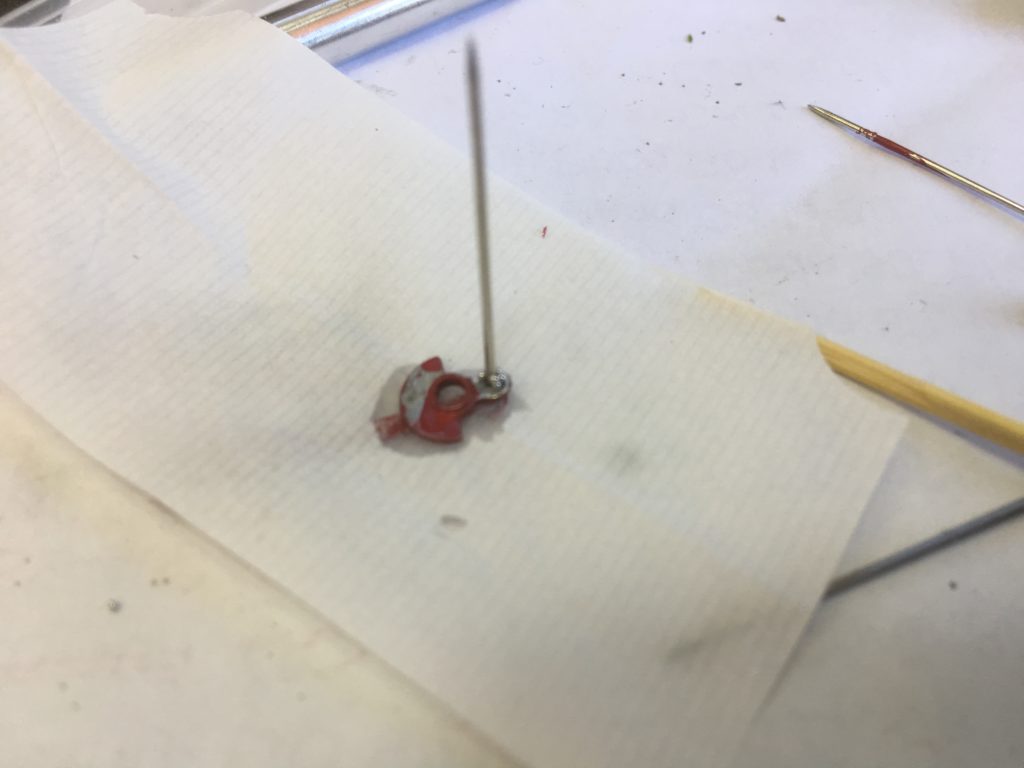
Two complete sets were assembled checked to be a freely moving assembly. The excess pin shafts were cut away and then the solder filed back. I then carefully reamed out the axle holes to be a tight fit on the brass axle bush used to fit the original Liliput counterweights.
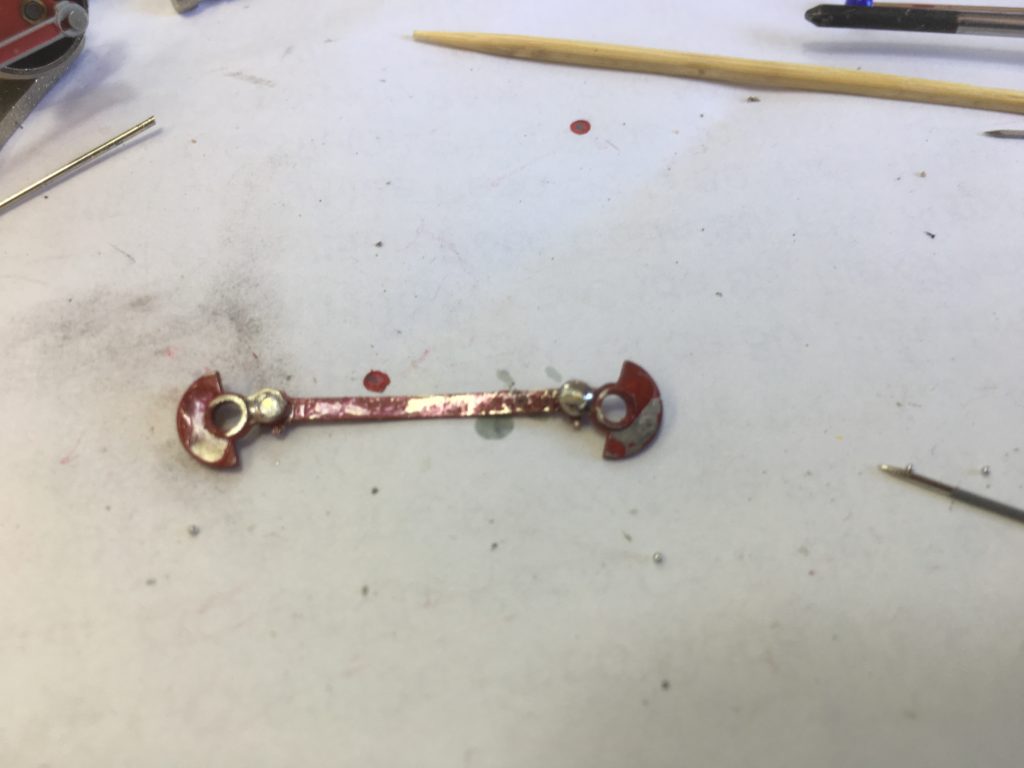
The first set were pressed onto the brass ferrules on the axles of both wheelsets using Loctite 638 compound. The opposite set needs to be carefully aligned at 90 degrees to the first set (quatered) so that they do not bind. This is best done with the wheelsets held in the bogie so that they cannot turn.
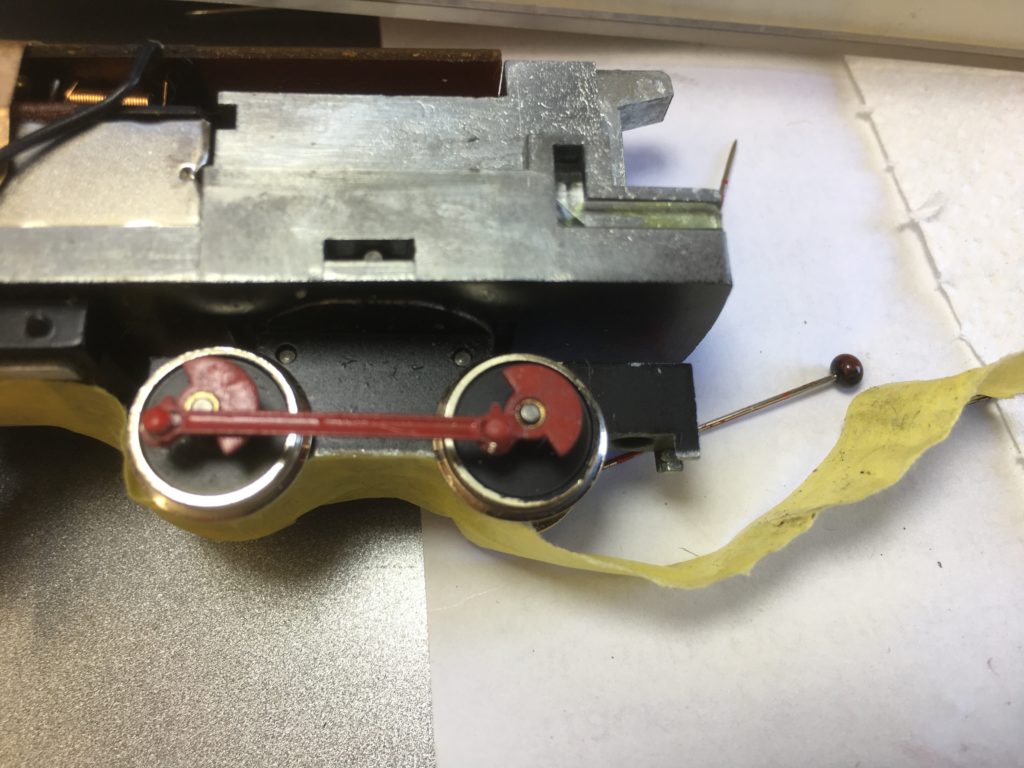

The completed loco with its new nickel-silver counterweights and connecting rods.
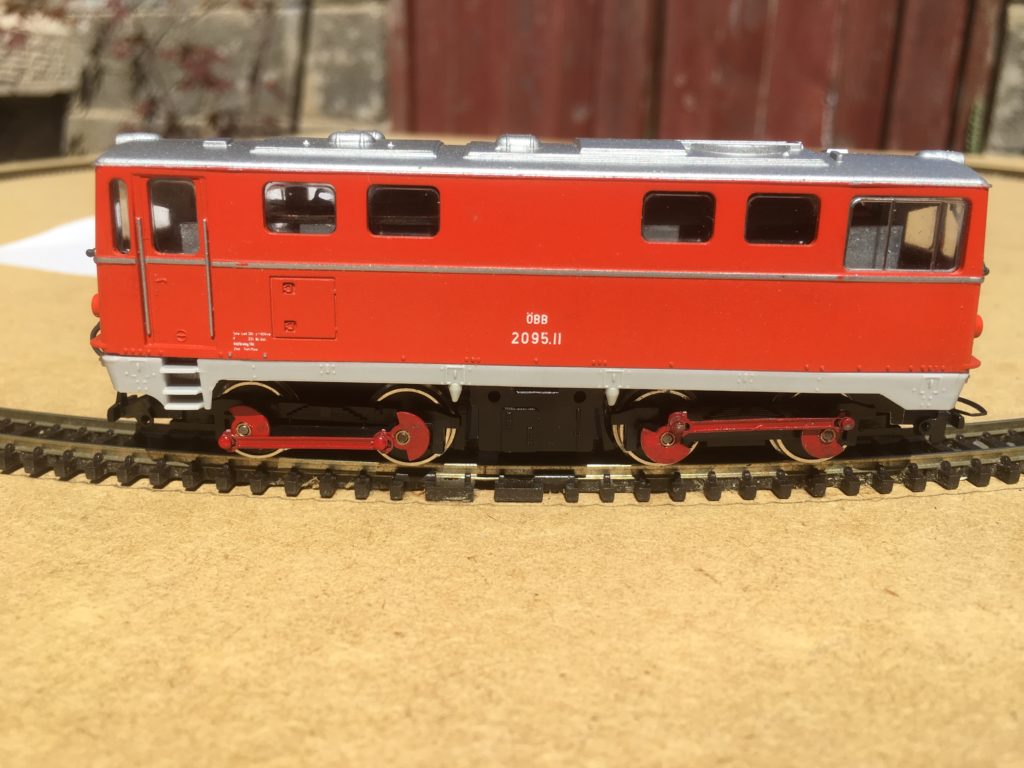
I must take this opportunity to express my sincere gratitude Sven van der Hart for his help and skill in producing the 2095 counterweight repair kit and for his enthusiasm for this project. Sven will soon be selling these kits from his website https://tramfabriek.nl.
